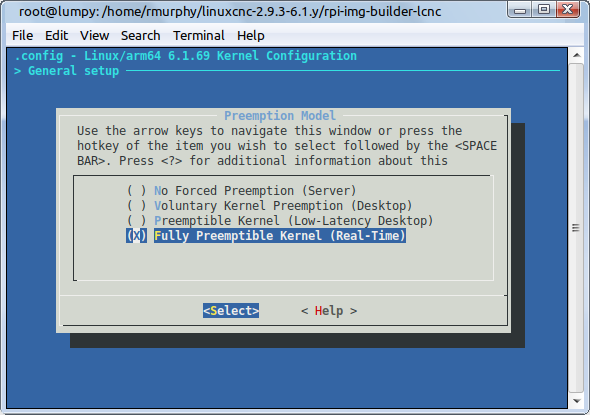Search Results (Searched for: )
- Cant do this anymore bye all

12 Jan 2025 03:02
Replied by Cant do this anymore bye all on topic Used Laptops tested with LinuxCNC and Mesa Ethernet boards
Used Laptops tested with LinuxCNC and Mesa Ethernet boards
Category: Computers and Hardware
- Cant do this anymore bye all

12 Jan 2025 02:57
Replied by Cant do this anymore bye all on topic Real-time kerel not detected on patched 6.12
Real-time kerel not detected on patched 6.12
Category: General LinuxCNC Questions
- Cant do this anymore bye all

12 Jan 2025 02:38
Replied by Cant do this anymore bye all on topic Real-time kerel not detected on patched 6.12
Real-time kerel not detected on patched 6.12
Category: General LinuxCNC Questions
- blazini36
- blazini36
12 Jan 2025 02:17
Replied by blazini36 on topic Flex GUI Stylesheet Builder
Flex GUI Stylesheet Builder
Category: Flex GUI
- royka
- royka
12 Jan 2025 02:06
Replied by royka on topic Real-time kerel not detected on patched 6.12
Real-time kerel not detected on patched 6.12
Category: General LinuxCNC Questions
- Cant do this anymore bye all

12 Jan 2025 01:37
Replied by Cant do this anymore bye all on topic Real-time kerel not detected on patched 6.12
Real-time kerel not detected on patched 6.12
Category: General LinuxCNC Questions
- baikal718
- baikal718
12 Jan 2025 01:20
Replied by baikal718 on topic Pulling out my hair trying to set up a spindle on 7i96
Pulling out my hair trying to set up a spindle on 7i96
Category: Basic Configuration
- baikal718
- baikal718
12 Jan 2025 01:06
Replied by baikal718 on topic Pulling out my hair trying to set up a spindle on 7i96
Pulling out my hair trying to set up a spindle on 7i96
Category: Basic Configuration
- royka
- royka
12 Jan 2025 00:33
Replied by royka on topic Real-time kerel not detected on patched 6.12
Real-time kerel not detected on patched 6.12
Category: General LinuxCNC Questions
- camb0
- camb0
12 Jan 2025 00:23
- camb0
- camb0
12 Jan 2025 00:20
- InnerBushman

12 Jan 2025 00:19
XHC WHB04B Photos of the PCB was created by InnerBushman
XHC WHB04B Photos of the PCB
Category: Computers and Hardware
- phillc54

12 Jan 2025 00:18
- ric812
- ric812
11 Jan 2025 23:59
Everlast supercut 50 wiring was created by ric812
Everlast supercut 50 wiring
Category: Plasma & Laser
Time to create page: 0.580 seconds



